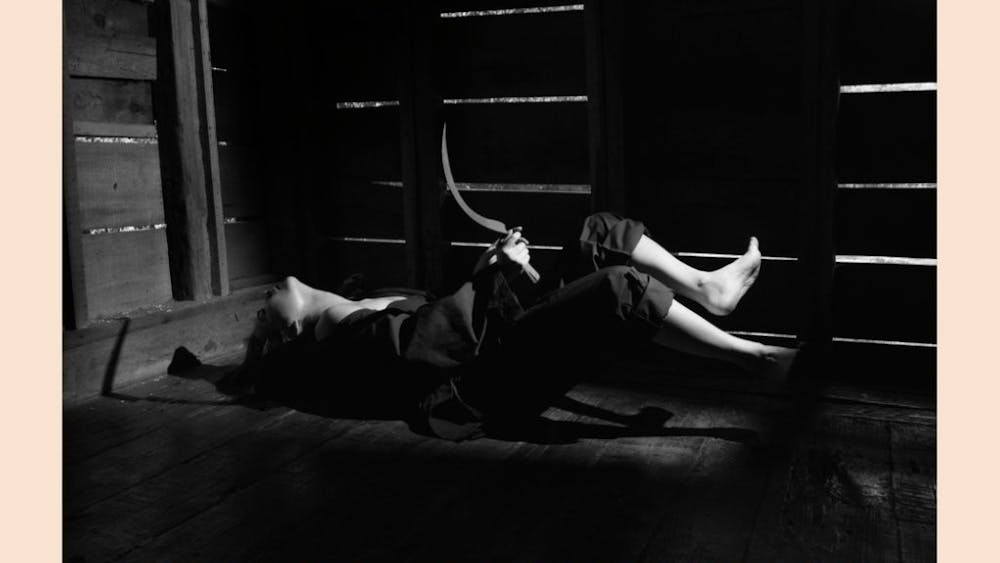Thirty-two years ago tonight, June 28, 1969, the Stonewall riots began. What should have been a routine shakedown of a rather sleazy gay bar by the New York City police suddenly turned into a rout.\nPelted first by pennies and then by bricks, the raiders had to barricade themselves inside the bar, calling for reinforcements when the rioters tried to firebomb it. For three nights gays and police skirmished in the streets.\nAs American riots go, in terms of damage to property and human beings they weren't so much. Gay people had fought back against the police at least once before, in California. Nor did Stonewall mark the beginning of a gay movement, even in the United States. So why did what one gay neo-conservative derided as a mere "bar fight" become what another gay neocon derided as a "sacred event that lies beyond the reach of objective discourse"?\nI'm not a big believer in impersonal historical forces, but something like them was at work. If you wanted to choose a good time to found an American radical movement, the late '60s would be it.\nThe Mattachine Society, founded in 1948 in California by ex-Communist Harry Hay, began with a radical vision, but by the early 1950s Hay had been expelled and Mattachine turned rightward. When gay women founded the Daughters of Bilitis soon after, it was solely as a social group, not as an activist organization.\nBy the 1960s, though, even timid Mattachine and the Daughters of Bilitis had altered the gay American landscape. There were Mattachine chapters in several cities, some of them exhibiting increasing militance. Frank Kameny, a gay astronomer fired from his government job, was fighting the Federal government in the courts in Washington D.C. Dick Leitsch led Mattachine New York in civil disobedience against discriminatory liquor laws. The Ladder, DOB's magazine, had become more explicitly feminist, and many lesbian activists joined or supported the growing resurgence of the women's movement. \nStarting in 1965 there was an annual picket for gay equality outside the White House - which meant a level of visibility by activists that would have been unthinkable 15 years earlier.\nSome activists acquired experience elsewhere, though: in the civil rights and anti-war movements. By 1969, the right of the mainstream to define the limits of thought was no longer accepted by many Americans.\nFor me, one powerfully symbolic moment was an appearance before the House Un-American Activities Committee by admitted heterosexual Tom Hayden, then associated with Students for a Democratic Society: instead of abasing himself before the abusive patriarchs of the HUAC, Hayden attacked the legitimacy of the committee itself, refusing to acknowledge its authority.\nImmediately after the Stonewall riots, a few activists announced the formation of the Gay Liberation Front. The name paid homage to the National Liberation Front of South Vietnam, conjuring up a very different conception of resistance than Mattachine or Daughters of Bilitis. Many of the people who flocked to GLF meetings in New York City, or who founded such groups elsewhere in the country, had little interest in larger radical politics, but such ideas had moved closer to most Americans' angle of vision than they were a few years earlier. \nGay organizations proliferated explosively across the country, but the very idea that homosexuals might organize to improve the conditions of their lives had never been so widespread before.\nWithin a few months, new positions were marked out between Gay Liberation Front's utopian-left vanguard and Mattachine\'s much more cautious mainstreaming. Impatient with GLF, some New Yorkers split away and founded Gay Activists Alliance, whose mission was not world revolution but fiercely practical direct action on gay issues.\nBefore long, the National Gay Task Force was organized with a similar anti-ideological focus. (Ironically, it is still considered too "leftist" by many gays, who prefer the rightist Human Rights Campaign.)\nSo why all this ancient history? The anniversary of Stonewall has become merely Gay Pride Day, an opportunity to dress up and party.\nMany GLBT people -- let alone heterosexuals -- have forgotten, if they ever knew, what started our holiday. "Gay liberation" has been confused with gay consumerism, and whatever you think of the consumer lifestyle, liberation it ain't. In honor of those who made gay-themed TV commercials possible, then, I submit this brief history lesson.
Gay liberation will not be televised
Get stories like this in your inbox
Subscribe





